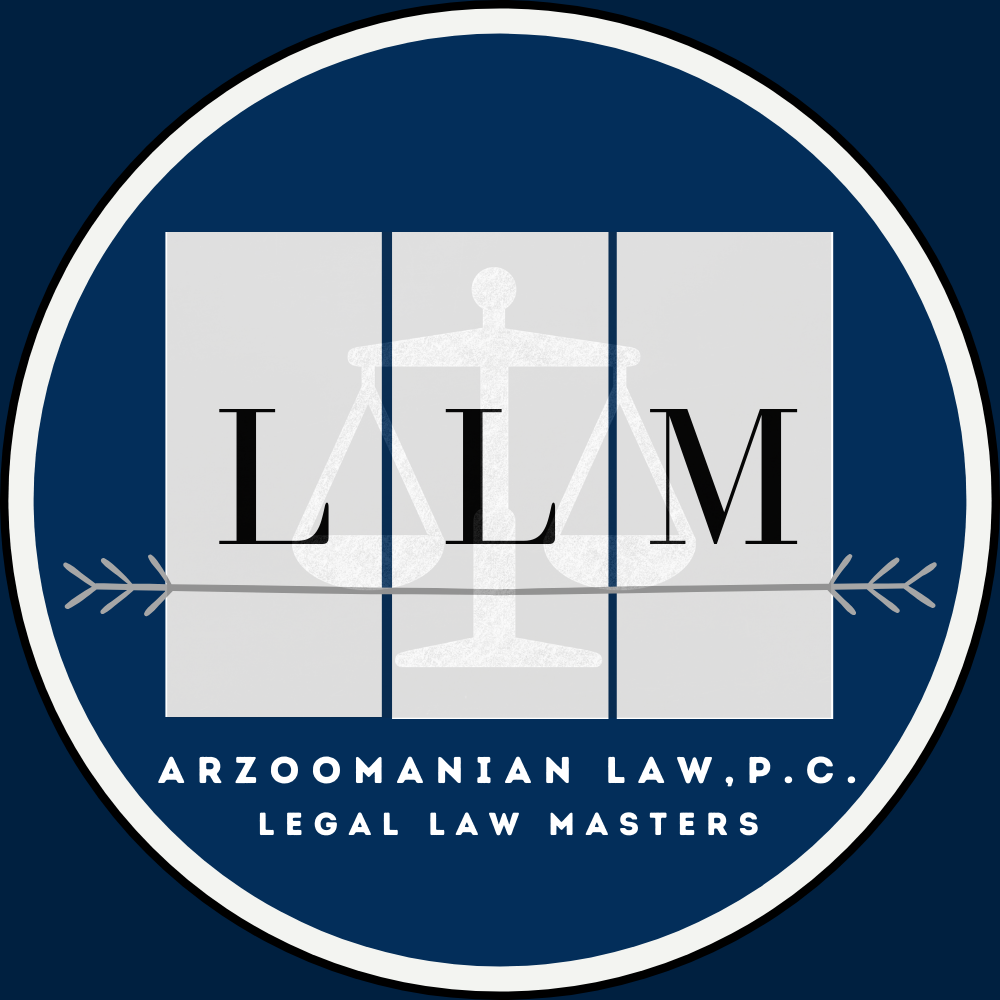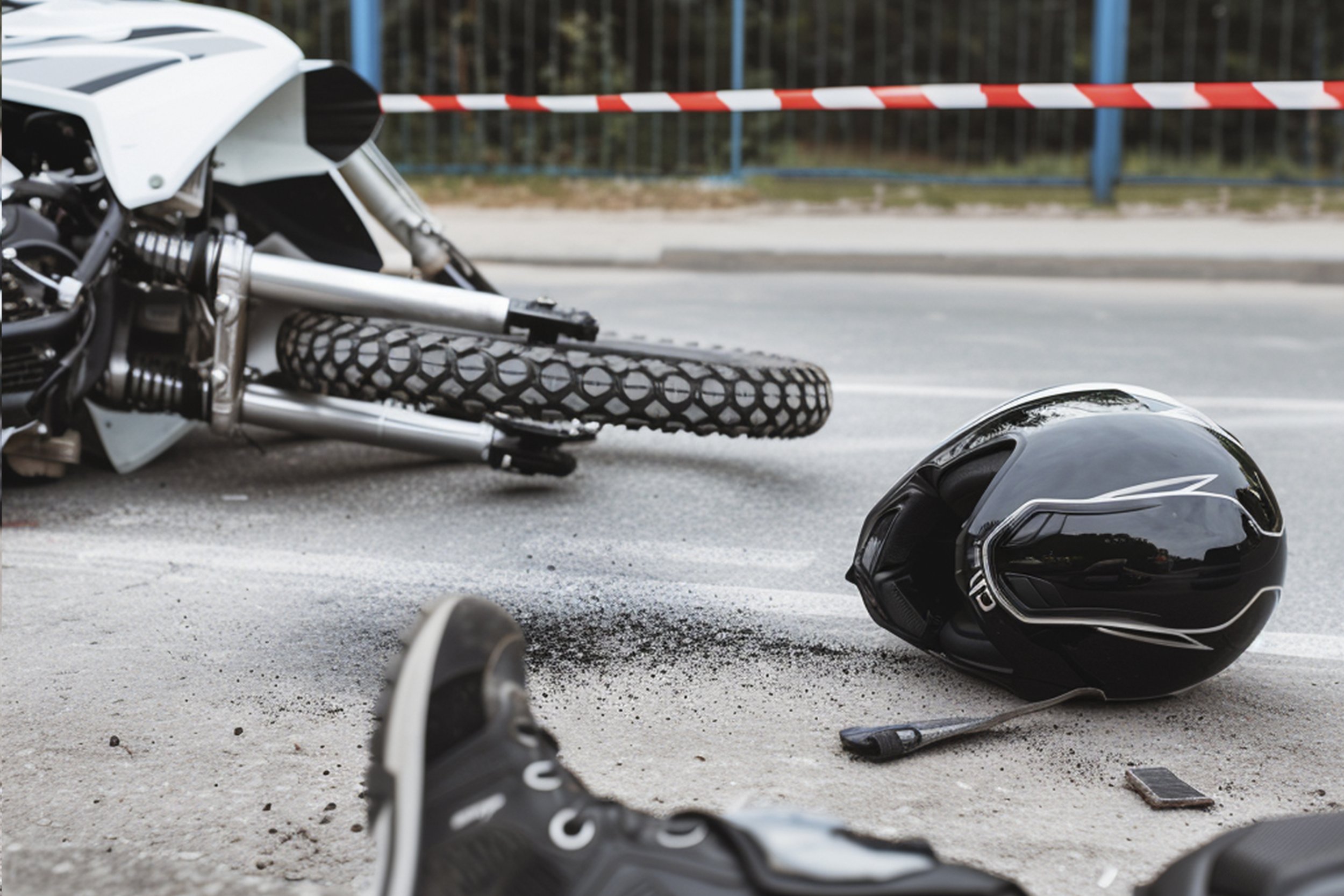
Top 7 Motorcycle Accident Causes in California
The most common causes of motorcycle accidents in California are driver error, including speeding, distracted driving, and failure to yield right-of-way. Non-driver-related factors, such as hazardous road conditions and adverse weather, also significantly contribute.
This guide aims to shed light on the prevalent causes that endanger motorcyclists, aiming to foster a safer riding environment for everyone — but it's not just the rider that's always to blame, as you'll soon see.
Below are some of the most common cases that our experienced Burbank motorcycle accident lawyers have represented in the past. Understanding these risks is the first step toward prevention, which we'll explore in detail.
4 Motorcycle accident causes caused by the rider
While external factors play a significant role in road safety, understanding the behaviors and decisions made by motorcyclists themselves can illuminate pathways to substantially reduce accident risks.
1. Driving under the influence
The effects of these substances severely diminish a rider's ability to operate their motorcycle safely, leading to decreased coordination, slowed reaction times, and impaired judgment.
These impairments make it challenging to respond effectively to dynamic road conditions, increasing the likelihood of accidents. According to the National Highway Traffic Safety Administration (NHTSA), impaired driving was responsible for a considerable percentage of motor vehicle-related fatalities (11,654 fatalities in 2020 alone), highlighting its impact on road safety.
For motorcyclists, who have less protection compared to car occupants, the risks are even more pronounced. The legal and safety implications of riding under the influence highlight the importance of sober riding as a critical component of motorcycle safety practices.
2. Excessive Speeding
When riders exceed the speed limit, their ability to react swiftly to unforeseen obstacles or changes in road conditions is significantly compromised. This reduction in reaction time not only elevates the risk of an incident but also intensifies the potential severity of injuries sustained during an accident.
Data from NHTSA highlights this risk, revealing that approximately one-third of all traffic-related deaths in 2021 were attributed to speeding. Motorcyclists, in particular, face heightened danger due to the inherent lack of protective barriers and the motorcycle's limited stability at high speeds, underscoring the critical need for speed regulation among riders.
3. Negligence
Negligence on the part of motorcyclists often contributes to road mishaps, manifesting through various forms of reckless behavior that compromise both personal and public safety.
Acts of negligence include:
Lane splitting
Failing to yield the right of way
Tailgating
Aggressively weaving through traffic
Blatantly ignoring traffic signals or road signs
Such actions not only increase the rider's risk of encountering legal problems but also significantly elevate the chances of serious accidents.
Consider that approximately 57% of recorded motorcycle accident fatalities in 2021 (3466 cases) involved collisions with other vehicles, often exacerbated by speeding and negligent riding behaviors.
To mitigate the risks associated with negligent riding, it is imperative for motorcyclists to adhere strictly to traffic regulations, maintain a prudent distance from other vehicles on the road, and cultivate a constant awareness of their surroundings.
4. Lack of motorcycle experience
New riders may not have fully developed the skills and judgment required to safely navigate traffic or respond appropriately to emergency situations.
According to the Motorcycle Safety Foundation (MSF), formal training and ongoing education are essential for riders at every experience level. Beginners, in particular, benefit from accredited riding courses that cover a broad spectrum of skills, from foundational bike control to sophisticated maneuvering techniques.
Such educational programs not only equip riders with practical expertise but also instill a mindset oriented toward safety and proactive risk management. Rider education is thus a critical preventive measure against the common pitfalls associated with inexperience on the road.
If you've been injured in a motorcycle accident in California due to someone else's negligence, get in touch with a personal injury attorney from our firm today for a free consultation.
Most common motorcycle accidents NOT related to rider error
While a significant portion of motorcycle accidents can be attributed to errors by the rider, it is important to recognize that not all incidents fall under this category. Various external factors, far removed from the control of the motorcyclist, often play a critical role in the occurrence of accidents.
Below are some common motorcycle accident causes that are not directly related to rider error:
1. Collison with vehicles after making a sudden left turn
One of the most common scenarios involves another vehicle making a sudden left turn in front of an approaching motorcycle, leaving little time for the rider to react and avoid a collision.
According to NHTSA data, turn accidents account for approximately 75% of all motorcycle crashes in the US. This statistic highlights the importance of defensive driving on the part of motorcyclists, who must remain vigilant and anticipate potential hazards posed by other vehicles on the road.
2. Vehicle blind spots
Blind spots are areas around a vehicle that are not visible to the driver's line of sight. Motorcycles, due to their smaller size and profile, are more prone to being in another vehicle's blind spot, increasing the risk of accidents caused by sudden lane changes or merging without proper awareness of surrounding traffic.
Around 35% of fatalities in motorcycle accidents are attributed to collisions with vehicles that fail to detect a motorcyclist in their blind spot. Riders can mitigate this risk by adopting proper lane positioning and increasing visibility through the use of reflective or high-visibility gear.
3. Poor road conditions
Poor road conditions and a lack of visibility due to weather often lead to the rider to lose control, which wouldn't necessarily affect larger vehicles. The disparity in stability between motorcycles and cars means that bikers are uniquely vulnerable to a range of road irregularities.
Key road hazards include:
Weather conditions
Potholes
Slick surfaces
Loose gravel
Debris
Riders must constantly scan the road ahead to anticipate and avoid potential hazards or make quick adjustments in their riding technique to navigate challenging terrain.
Around 67% of fatal motor crashes in the US happened in urban areas where the above conditions are more likely to occur, highlighting the importance of staying alert and maintaining safe speeds even in seemingly familiar environments.
Causes of motorcycle accident statistics
Motorcycle accident statistics reveal critical insights into the factors that lead to rider injuries and fatalities, guiding the development of targeted safety campaigns and regulatory measures.
In 2021, the National Highway Traffic Safety Administration (NHTSA) highlighted that more than 30% of motorcycle riders involved in fatal crashes were found to be speeding. This makes it a leading cause of motorcycle accidents in the US and far exceeds those involving other types of vehicles.
Alcohol impairment plays a significant role in motorcycle accidents, with 29% of riders fatally injured in crashes having blood alcohol concentrations (BAC) at or above 0.08%, the legal limit in most jurisdictions.
Among the various hazards, intersections emerge as particularly perilous, accounting for more than 40% of fatal two-vehicle motorcycle collisions, often involving a vehicle executing a left turn in the face of an oncoming motorcycle.
Need expert advice from a motorcycle accident lawyer?
If you or a loved one has been involved in a motorcycle accident, navigating the aftermath can be overwhelming. At Arzoomanian Law, we're committed to providing dedicated legal representation to motorcyclists who have been injured on the road.
Our experienced Glendale motorcycle accident lawyers understand the unique challenges riders face and are equipped to advocate effectively for your rights and compensation in an injury claim.
Don't face this challenging time alone. Contact Arzoomanian Law today for a free consultation to discuss how we can help you move forward.
We also recommend checking out our comprehensive guide on what to do after a motorcycle accident. There, you'll find essential information about documenting the accident, seeking medical attention, and steps to take to protect your legal rights.
Key takeaways on what causes most motorcycle accidents
While rider education is a crucial step in promoting motorcycle safety, it is essential to recognize and address external factors that can contribute to accidents.
By staying vigilant, practicing defensive driving techniques, and adhering to speed limits and traffic laws, riders can significantly reduce their risk of being involved in an accident. Additionally, seeking legal support from experienced motorcycle accident attorneys can help protect the rights and interests of riders in the event of an accident.





FAQs
-
Motorcycle accidents are a relatively common occurrence in California, which is a reflection of its high population density and congested traffic conditions. The state's diverse terrain, ranging from coastal highways to mountain passes, along with its year-round favorable riding weather, attracts a large number of motorcycling enthusiasts.
-
New Hampshire consistently ranks as the US state with the most motorcycle accidents. The state's road conditions, including winding roads and steep hills, pose significant challenges for motorcyclists. Additionally, the absence of universal helmet laws likely contributes to higher fatality rates in motorcycle accidents in this state.
-
The most common type of fatal motorcycle crash is a severe collision with another vehicle, often occurring at intersections. These crashes frequently involve a vehicle turning left in front of an oncoming motorcycle.



